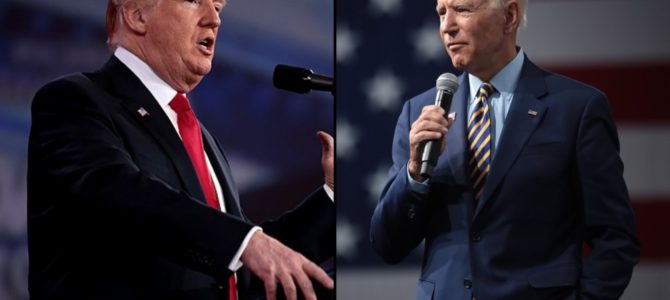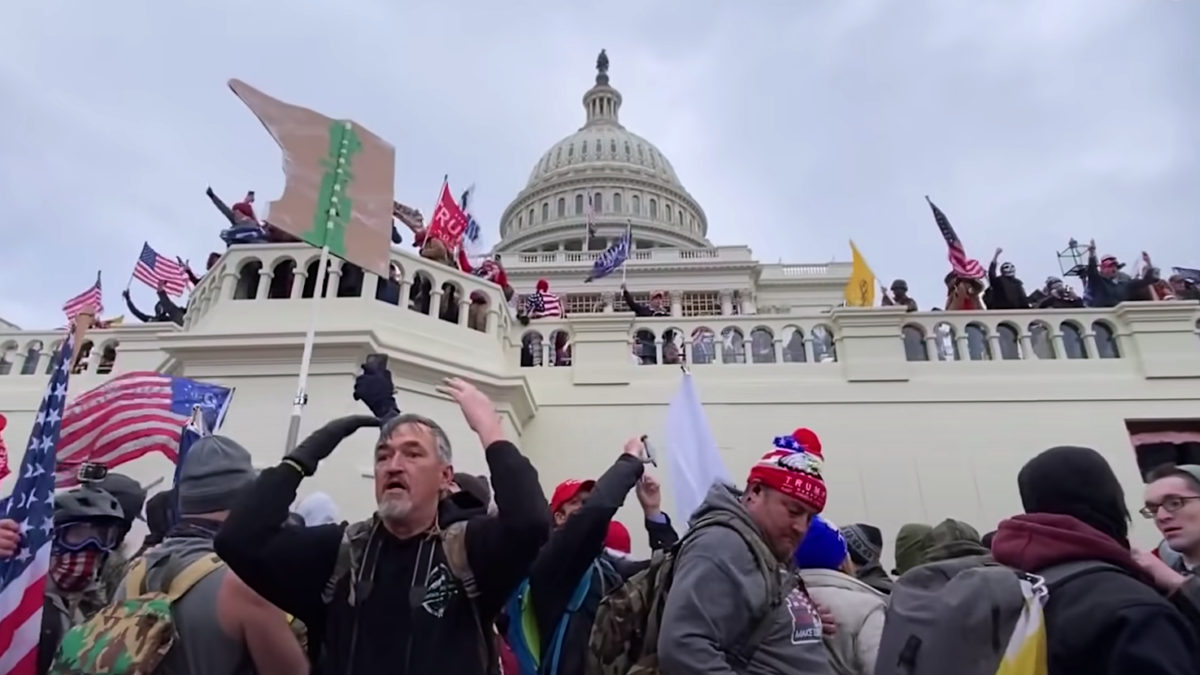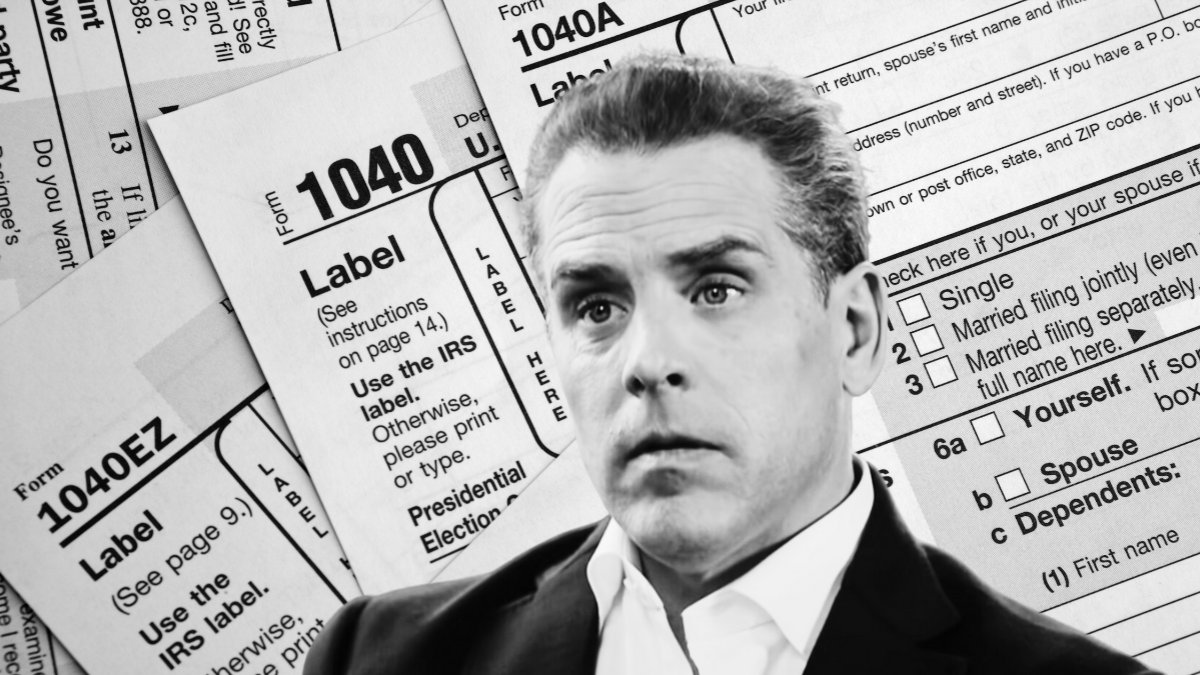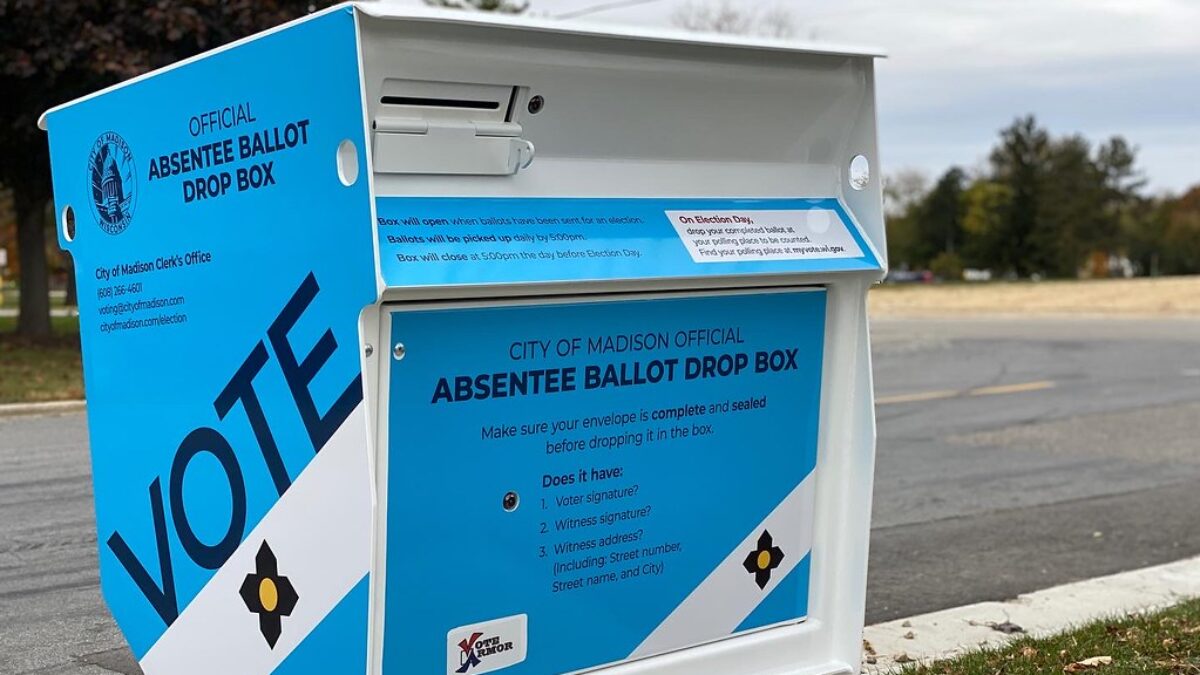
On Monday, without comment, the Supreme Court ended the last of the 2020 election cases, rejecting Trump v. Wisconsin Election Commission in a one-line order. It was a quiet ending to a tumultuous election season, but like a football game with a contentious call at the end, the debate over who really won will likely go on much longer.
The courts have always served as a pressure-relief valve on our internal disagreements. From the battle with an unscrupulous car dealer to a nasty divorce that requires discernment over how to split everything from the antique Corvette to the kids, wise judges can help to bring peace and healing. Surely, for a nation reeling after a tempestuous presidential election filled with strange occurrences, the courts were needed to bring us together.
We needed the steady hand of impartial jurists. Most of all, the losing side needed to know that a fair shake was given, and that justice prevailed, even if it wasn’t the outcome they wanted. That did not happen after Nov. 3. Despite a stack of cases that worked their way through the legal system, we remain bitterly divided.
A Rasmussen survey last month found that 61 percent of Republicans say Joe Biden did not win the election fairly. That number hasn’t changed much since early January, when 69 percent of GOP voters voiced the same concern. That 34 percent of all voters and 36 percent of independents agree with them is a strong signal that something went terribly amiss in the maelstrom of election cases.
The election is over. There has been an inauguration. So why did ABC’s George Stephanopoulos feel the need to berate a U.S. senator and his audience with the demand, “Can’t you just say the words: This election was not stolen?” Why must he shout, “There were 86 challenges filed by President Trump and his allies in court. All were dismissed!”
Perhaps, the answer lies in the details of those cases, as much in how they were adjudicated as in the final rulings.
Taking Stock of the 2020 Election Case List
Let’s start with some clarity: The list of more than 80 cases includes both the same cases that were appealed through various courts and many that had no direct tie to the president’s legal team or the Republican Party. In reality, there were 28 unique cases filed across the six contested states by President Trump or others on his behalf.
Twelve were filed in Pennsylvania, six in Georgia, and two or three in each of the other states. Of course, there was also the lawsuit filed by the state of Texas against the state of Pennsylvania that had the potential to change the outcome. So let’s call it 29.
To be sure, that is still a lot of cases. Yet to understand why there is still widespread unease with the election, would it not be better to stop demanding conformity and instead dig deeper to see what the courts told us in those cases, and what they did not? A review of them shows that, contrary to a common narrative, few were ever considered on the merits.
Death by Technicalities
First of all, we can recognize that many of the cases produced no useful information relative to election integrity. We learned nothing from a lawsuit dismissed by a state judge in Georgia (Boland v. Raffensperger) on the basis that the plaintiff had sued an “improper party” rather than hearing the merits of why the ballot rejection rate allegedly dropped from 1.53 percent in 2018 to 0.15 percent in the 2020 general election.
Also, did 20,000 people vote who do not live in the state, when Georgia’s electoral votes were allotted by an approximately 12,000 margin to Biden? We never learned the answers to those questions nor even examined the evidence, because Georgia Secretary of State Brad Raffensperger was not a candidate for office nor the election superintendent who conducted the election, and therefore per state law, was not liable.
Similarly, a Trump lawsuit in Michigan (Donald J. Trump for President, Inc. v. Benson) alleging state law was violated by the failure to allow access by observers, and seeking to stop counting, was ruled moot since it was not filed until 4:00 p.m. on Nov. 4, after votes were counted. The judge simultaneously relieved the secretary of state of responsibility for any wrongdoing because she had issued guidance requiring admission of credentialed challengers.
So we are left with the memory of the videos of vote counters clapping as Republican observers were evicted and of covers being placed over windows. The judge on this case also said Michigan Secretary of State Jocelyn Benson bore no legal responsibility for video monitoring of drop boxes nor of making video from such surveillance available, despite a recently passed law requiring surveillance of all drop boxes installed after Oct. 1.
A lawsuit in Pennsylvania, Metcalfe v. Wolf, claimed “approximately 144,000 to 288,000 completed mail-in and/or absentee ballots” in Pennsylvania may have been illegal based on testimony from a U.S. Postal Service contractor. The contractor said he was hired to haul a truck of what he believed to be this many completed mail-in ballots from New York to Pennsylvania. The complaint also alleged there was “evidence” of ballots that were backdated at a postal facility in Erie.
The judge tossed it since the state’s Election Code required their request to be filed within 20 days of the alleged violation, which was Nov. 23. They filed Dec. 4. We’ll never know if that truck brought in pallets of completed ballots—an amount sufficient to overturn the state’s Electoral College vote.
In Wisconsin, the Trump v. Evers suit alleged that violations of state election law had occurred in Milwaukee and Dane Counties as municipal clerks issued absentee ballots without the required written application, that they illegally completed missing info on ballots, that absentee ballots were wrongly cast by voters claiming “Indefinite Confinement” status (and for which no ID was provided), and that Madison’s “Democracy in the Park” event violated election laws.
A divided Wisconsin Supreme Court refused to hear the lawsuit, sidestepping a decision on the merits of the claims and instead ruling the case must first wind its way through lower courts—an effective death sentence given the timing.
Absurdities: When ‘Shall’ Doesn’t Mean Shall
At times, judges resorted to Clintonian wordsmithing to relieve a word of its recognized meaning. A state Supreme Court judge in Pennsylvania was tasked with reviewing the eligibility of 2,349 mail-in ballots that were purportedly defective according to the state Election Code (Ziccarelli v. Allegheny County Board of Elections).
In the court’s decision, he noted “We agree with the Campaign’s observation that…the General Assembly set forth the requirements for how a qualified elector may cast a valid absentee or mail-in ballot … We further agree that these sections of the Election Code specifically provide that each voter ‘shall (emphasis added) fill out, date, and sign’ the declaration on the outside envelope. We do not agree with the Campaign’s contention, however, that because the General Assembly used the word ‘shall’ in this context, it is of necessity that the directive is a mandatory one …”
Indeed. Why even write laws? Perhaps the Pennsylvania Supreme Court would feel differently if their rulings were subjected to such an open interpretation.
A federal lawsuit in the same state (Donald J. Trump for President, Inc. v. Boockvar) included a claim that some Democrat counties implemented a “notice and cure” policy, allowing defective ballots to be fixed and counted, while Republican counties did not, thereby creating an equal protection issue.
The judge found that two individual plaintiffs had indeed been harmed by the denial of their votes, but that they lacked standing since the defendant (Democrat) counties “had nothing to do with the denial of Individual Plaintiff’s ability to vote” as their “ballots were rejected by Lancaster and Fayette [Republican] Counties, neither of which is a party to this case.”
So the judge effectively created a legal “Catch 22” in which one must show direct harm from an unrelated party in order to prevail. Logically, under this standard, no equal protection claim could ever be substantiated.
In a Nov. 5 filing (Donald J. Trump for President, Inc. v. Philadelphia County Board of Elections), Republicans alleged that the Philadelphia County Board was “intentionally refusing to allow any representatives and poll watchers for President Trump and the Republican Party … [and] continuing to count ballots, without any observation” by Republican poll watchers. The Commonwealth Court agreed on appeal that observers be allowed within six feet of vote counting while complying with COVID-19 protocols.
However, the state Supreme Court reversed that ruling, finding that the Election Code allows the board to make rules “for protecting its workers’ safety from COVID-19 and physical assault,” and that the only requirement is that “one authorized representative of each candidate in an election and one representative from each political party shall be permitted to remain in the room”— not necessarily within close-enough range to observe vote-counting (emphasis original in court decision). So what is the point of an observer who cannot observe anything?
In the case of Ward v. Jackson et al. in Arizona, an issue over election observers was ruled as “untimely” since “the observation procedures for the November general election were materially the same as for the August primary election, and any objection to them should have been brought at a time when any legal deficiencies could have been cured.” Lacking in that statement was an explanation as to why any Republican observers would have been needed in a Democrat-only party primary.
Judicial Blindness: See No Evil
In the same lawsuit (Ward v. Jackson et al.) the judge also rejected a claim of improper signature verification after allowing a review of 100 sample ballots. Plaintiff and defense experts found 6 and 11 percent of signatures, respectively, to be “inconclusive.”
On the same page of his opinion, the judge noted that out of the total 1.9 million mail-in ballots, only approximately 20,000 had been identified as having a signature issue, or 1 percent. There was no explanation as to why poll workers found six times fewer issues with signatures. The math would suggest either a bias to accept, despite signature issues, or that the sample examined was statistically invalid.
Further mystifying, he wrote that “there is no evidence that the manner in which signatures were reviewed was designed to benefit one candidate or another.” But surely fraud can easily benefit the offender alone, even with use of a uniform vote-count procedure. Fill out 1,000 ballots consisting of 500 for Trump and 500 for Biden, then mix in 100 more that are fraudulent for Biden and count them using any method. Who wins? It’s not a hard possibility to imagine, but the judge ignored it.
He also concluded “the evidence does not show illegal votes”—in a state in which an estimated 419,000 illegally present foreign citizens reside, and which went to Biden by a margin of just more than 10,000 votes out of a total of more than 3.2 million.
Importantly, the judge noted at the outset that “the Plaintiff in an election contest has a high burden of proof and the actions of election officials are presumed to be free from fraud and misconduct.” It’s a fair statement of the law. It’s also an indication of the difficulty in prevailing, even when issues exist. Every case across the nation was evaluated under a similar high hurdle, with the status quo treated as sacrosanct.
Too Early and Too Late
Republicans also often found themselves in an impossible “damned if you do, damned if you don’t” situation on the timing of challenges to election laws.
In Georgia Republican Party, Inc. et al. v. Raffensperger et al, candidates Kelly Loeffler and David Perdue sued prior to their U.S. Senate run-offs, alleging harm would occur from unconstitutional election procedures. Their counsel noted (on appeal) that the court “dismissed the case for lack of standing, reasoning that ‘the Supreme Court instructs that a theory of future injury is too speculative to satisfy the well-established requirement that threatened injury must be certainly impending.’” Filed too early.
In the same state, a federal judge dismissed Sidney Powell’s lawsuit (Pearson v. Kemp), in part citing that it was filed too late—it should have been filed before the election. As another example, in Trump v. Wisconsin Elections Commission, a judge dismissed the president’s suit saying it involved “issues he plainly could have raised before the vote occurred.”
Together, it demonstrated the hurdle that many election cases faced—denied before the election as “speculative,” or afterward as too late.
The Clock Ran Out: January 6
Several lawsuits were resolved not by a weighing of merits, but as a practical consequence of the electoral vote on Jan. 6 that certified Biden as the winner of the presidency.
Trump had filed suit on Dec. 4 in Georgia (Trump v. Raffensperger) alleging violations of state election law and the inclusion of specific ineligible votes: 66,247 underage votes, 2,423 persons not registered, 15,700 who had changed address, 1,043 who illegally listed a P.O. box address as their address, 8,718 who died prior to their votes being cast, 92 absentee ballots counted prior to the date those voters requested a ballot, 217 ballots shown as applied for and sent out and received on the same day, and 2,560 votes from felons with uncompleted sentences. These were significant numbers in an election that was decided by fewer than 12,000 votes.
The suit had also noted that 305,701 had applied for an absentee ballot more than 180 days prior to election, thereby violating state law. Importantly, it also took issue with the secretary of state’s Consent Decree with Democrats, which allowed signature matching on envelopes and applications, but not versus registration rolls. And it cited the low 0.34 percent rejection rate of mail-in ballots, a tenth of the rate of prior elections, despite a six-fold increase in number of such ballots cast.
The suit was withdrawn on Jan. 7, with none of the issues resolved, the day after Congress met and the matter was rendered moot.
Another Georgia suit (Still v. Raffensperger) alleged that Coffee County Board had been unable to replicate electronic recount results, and that the error was sufficient to put the outcome of that county in doubt, with a potentially similar issue in others across the state. It noted that Raffensperger had forced an arbitrary Dec. 4 deadline to certify the results despite the county’s letter of the same date saying the results “should not be used.”
The legal battle continued, and the state’s counsel eventually demanded in a Jan. 3 letter that all lawsuits against Kemp, Raffensperger, and the State Elections Board be dropped in order to “cooperatively share information.” Otherwise, they would remain in a “litigation posture”—quite a telling comment. Why was cooperation ever resisted?
Trump’s counsel accepted the offer of dismissal to get information they had requested, but it came as the timeframe to use it ended on Jan. 6. The suit was withdrawn on Jan. 7.
The Supreme Court Punted
The nation’s highest court showed some early inclination for involvement in the brewing election issues, such as Justice Samuel Alito’s order to separate certain late ballots in Pennsylvania in Republican Party of Pennsylvania v. Boockvar. Yet it soon took a different tone. A petition to expedite a hearing was denied and later the court refused the case.
In December, the court rejected a key lawsuit filed by the state of Texas (Texas v. Pennsylvania), and joined by 18 other state attorneys general, alleging that Pennsylvania, Georgia, Michigan, and Wisconsin violated the U.S. Constitution by changing election procedures through non-legislative means. The justices ruled that Texas lacked standing under Article III of the Constitution to challenge the results of the election held by another state.
In Kelly v. Pennsylvania, Rep. Mike Kelly claimed that the recently enacted Act 77 to expand mail-in balloting violated the state constitution, as amended in 1967, that “allowed for absentee ballots to be cast in the four (4) exclusive circumstances authorized under Article VII, Section 14.”
He also noted that “the legislature first recognized their constitutional constraints and the need to amend the constitution in order to enact mail-in voting, sought to amend the constitution to lawfully allow for the legislation they intended to pass, and subsequently abandoned their efforts to comply with the constitution and instead enacted Act 77 irrespective of their actual knowledge that they lacked the legal authority to do so unless and until the proposed constitutional amendment was ratified by approval of a majority of the electors …”
A Commonwealth Court judge agreed on Nov. 25 and ordered that any action to certify the election be stopped, pending an evidentiary hearing two days later. However, on Nov. 28, the Supreme Court of Pennsylvania reversed that decision, saying the “Petitioners sought to invalidate the ballots of the millions of Pennsylvania voters who utilized the mail-in voting procedures established by Act 77 and count only those ballots that Petitioners deem to be ‘legal votes.’”
Yes, that is exactly what the plaintiffs sought—the counting of only legal votes. But again, like many other courts, this one relied on a philosophy that excluding any ballots would disenfranchise voters. So they set aside the state constitution for their own preference.
The U.S. Supreme Court refused to expedite an appeal on this case when it would have mattered, then recently refused to hear it at all, a decision Justice Clarence Thomas called “inexplicable” in his dissent.
The Supreme Court also refused to hear any of Sidney Powell’s cases—in Arizona, Wisconsin, and Michigan—and in doing so, deprived Americans of the chance to hear evidence for and against very serious claims that electronic voting machines could be manipulated. Of all of the allegations, perhaps none more so instilled fear into voters as the possibility that our votes could be tampered with and changed, thwarting democracy itself.
Did the machines really show decimal totals for votes rather than integers? Were they designed to flip votes, and in such a way that no audit could trace it? Were these machines connected to the internet on election night, and did data show that foreign actors accessed it? Voters will never know. The court could have held these claims up to the objective light of justice, and either exposed it all as painfully true or wildly false, but it didn’t.
When most needed, the court that once took the time to render a decision on whether a tomato is a fruit or vegetable chose to punt on each of the key presidential election cases. American voters are worse off for it as confidence in elections erodes.
Lessons Learned
President Trump always had a very uphill climb to prevail. This wasn’t a one-state battle as in the George W. Bush versus Al Gore contest. Trump was effectively required to play six-dimensional chess, in six states, all in the span of a few months.
As Andy McCarthy noted, “a brutally tight time frame took effect [upon contesting the election], imposed by state and federal deadlines. It is a drastic departure from the normal litigation pace of investigation, legal research, and the formulation of cognizable claims.” Indeed, it was a nearly impossible task. It was even harder when Trump’s attorneys were influenced and threatened.
In the end, should we be surprised that voters retain a strong sense of skepticism over the outcome of the presidential election? That a man who largely campaigned from his basement, who exhibited signs of age-related mental decline, could handily defeat a vigorous incumbent who drew immense crowds is naturally hard to believe.
The election of 2020, which included more than 155 million votes, was decided by approximately 300,000 votes in six states, or 0.2 percent of the electorate, all of which came by an unnatural flip of results late on election night. Despite judges’ repeated hand-wringing that any court action would disenfranchise millions of voters, the reality is that millions of others may have been disenfranchised, and they instinctively suspect so.
The one thing many voters seem to have learned through the legal chaos is that it’s easier to commit election violations than to stop them. So the electorate remains divided—even after “86 election cases.”









